Refine listing
Actions for selected content:
16950 results
9 - Thermodynamics of planetary volatiles
-
- Book:
- Thermodynamics of the Earth and Planets
- Published online:
- 07 September 2011
- Print publication:
- 25 August 2011, pp 420-476
-
- Chapter
- Export citation
9 - Asymptotics for Sample Bispectra
-
- Book:
- Random Fields on the Sphere
- Published online:
- 07 October 2011
- Print publication:
- 25 August 2011, pp 223-244
-
- Chapter
- Export citation
References
-
- Book:
- Planetary Surface Processes
- Published online:
- 05 June 2012
- Print publication:
- 25 August 2011, pp 465-484
-
- Chapter
- Export citation
4 - The Second Law of Thermodynamics and thermodynamic potentials
-
- Book:
- Thermodynamics of the Earth and Planets
- Published online:
- 07 September 2011
- Print publication:
- 25 August 2011, pp 181-228
-
- Chapter
- Export citation
8 - Slopes and mass movement
-
- Book:
- Planetary Surface Processes
- Published online:
- 05 June 2012
- Print publication:
- 25 August 2011, pp 319-347
-
- Chapter
- Export citation
Contents
-
- Book:
- Random Fields on the Sphere
- Published online:
- 07 October 2011
- Print publication:
- 25 August 2011, pp vii-x
-
- Chapter
- Export citation
Preface
-
- Book:
- Random Fields on the Sphere
- Published online:
- 07 October 2011
- Print publication:
- 25 August 2011, pp xi-xii
-
- Chapter
- Export citation
Index
-
- Book:
- Planetary Surface Processes
- Published online:
- 05 June 2012
- Print publication:
- 25 August 2011, pp 485-500
-
- Chapter
- Export citation
8 - Equations of state for solids and the internal structure of terrestrial planets
-
- Book:
- Thermodynamics of the Earth and Planets
- Published online:
- 07 September 2011
- Print publication:
- 25 August 2011, pp 386-419
-
- Chapter
- Export citation
Frontmatter
-
- Book:
- Planetary Surface Processes
- Published online:
- 05 June 2012
- Print publication:
- 25 August 2011, pp i-v
-
- Chapter
- Export citation
10 - Melting in planetary bodies
-
- Book:
- Thermodynamics of the Earth and Planets
- Published online:
- 07 September 2011
- Print publication:
- 25 August 2011, pp 477-521
-
- Chapter
- Export citation
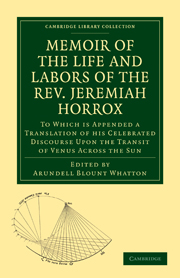
Memoir of the Life and Labors of the Rev. Jeremiah Horrox
- To Which is Appended a Translation of his Celebrated Discourse Upon the Transit of Venus Across the Sun
-
- Published online:
- 05 August 2011
- Print publication:
- 10 June 2010
- First published in:
- 1859
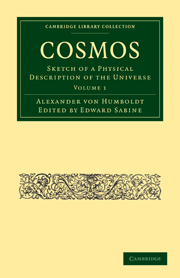
Cosmos
- Sketch of a Physical Description of the Universe
-
- Published online:
- 05 August 2011
- Print publication:
- 10 June 2010
- First published in:
- 1846

Life of James Ferguson, F. R. S.
- In a Brief Autobiographical Account, and Further Extended Memoir
-
- Published online:
- 05 August 2011
- Print publication:
- 19 August 2010
- First published in:
- 1867
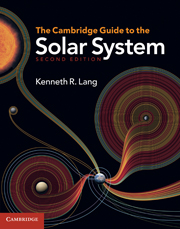
The Cambridge Guide to the Solar System
-
- Published online:
- 05 August 2011
- Print publication:
- 03 March 2011
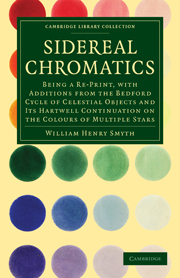
Sidereal Chromatics
- Being a Re-Print, with Additions from the Bedford Cycle of Celestial Objects and its Hartwell Continuation on the Colours of Multiple Stars
-
- Published online:
- 05 August 2011
- Print publication:
- 01 July 2010
- First published in:
- 1864
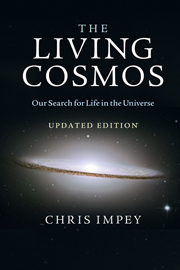
The Living Cosmos
- Our Search for Life in the Universe
-
- Published online:
- 05 August 2011
- Print publication:
- 02 June 2011
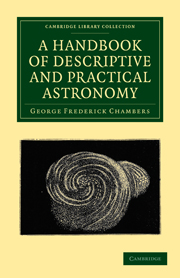
A Handbook of Descriptive and Practical Astronomy
-
- Published online:
- 05 July 2011
- Print publication:
- 17 June 2010
- First published in:
- 1861
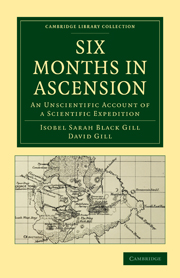
Six Months in Ascension
- An Unscientific Account of a Scientific Expedition
-
- Published online:
- 05 July 2011
- Print publication:
- 10 June 2010
- First published in:
- 1878
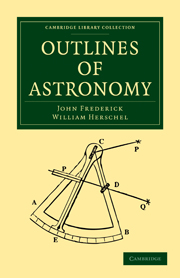
Outlines of Astronomy
-
- Published online:
- 05 July 2011
- Print publication:
- 10 June 2010
- First published in:
- 1864
